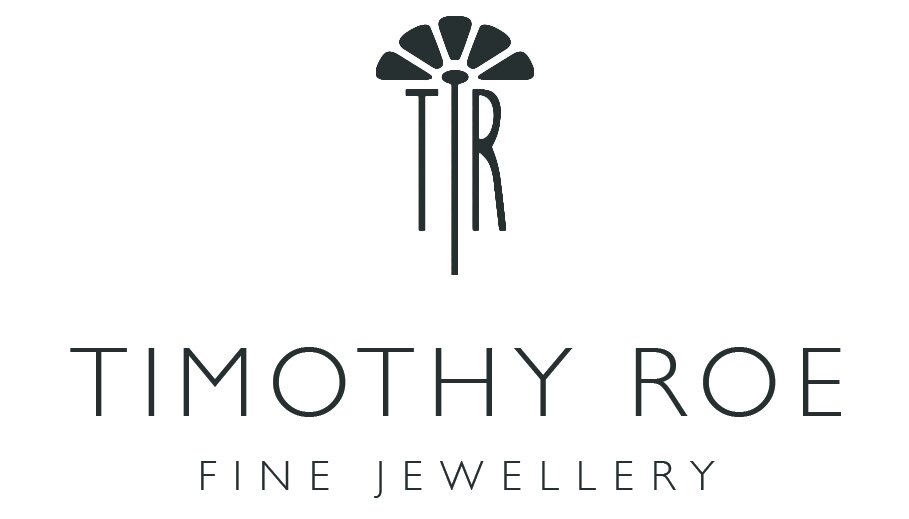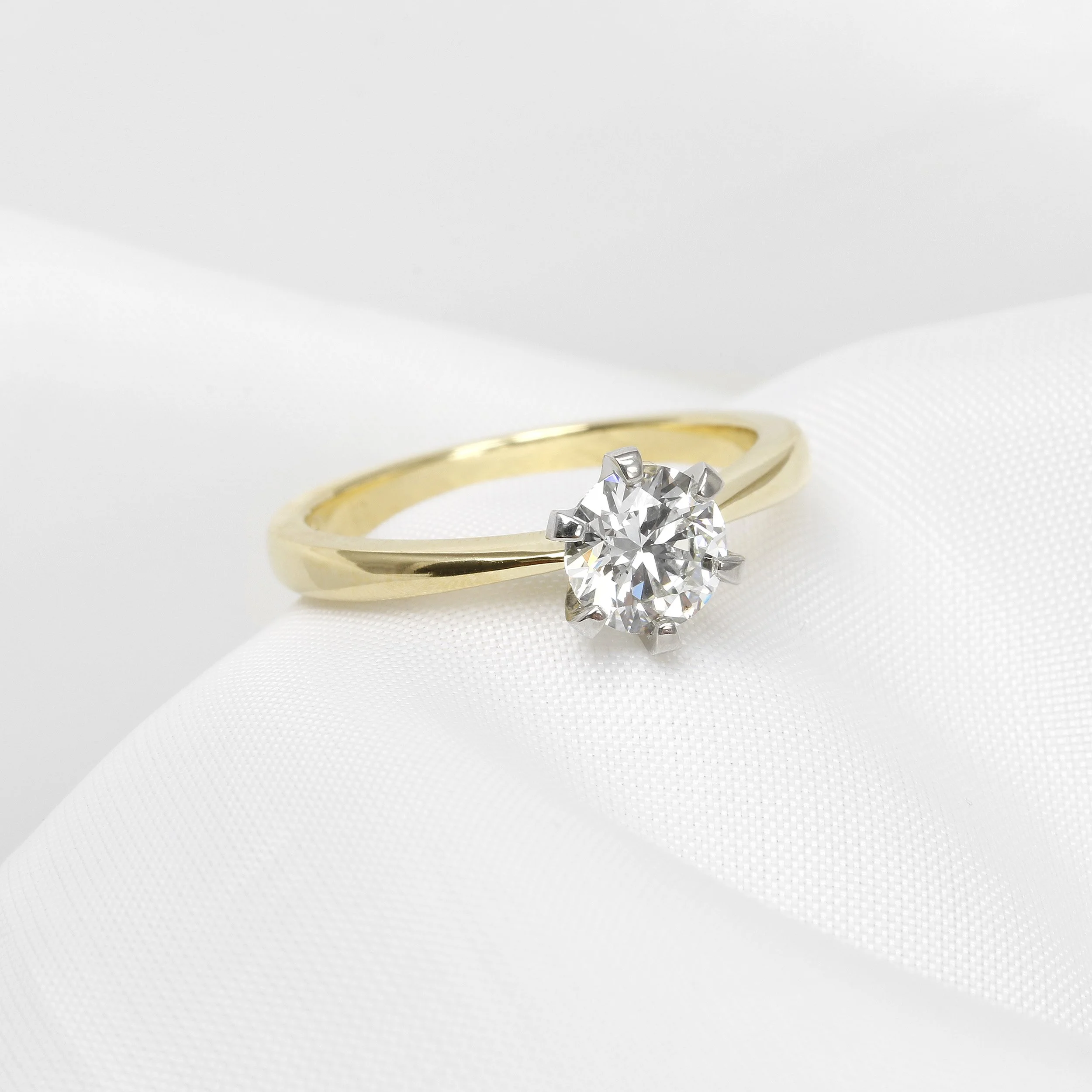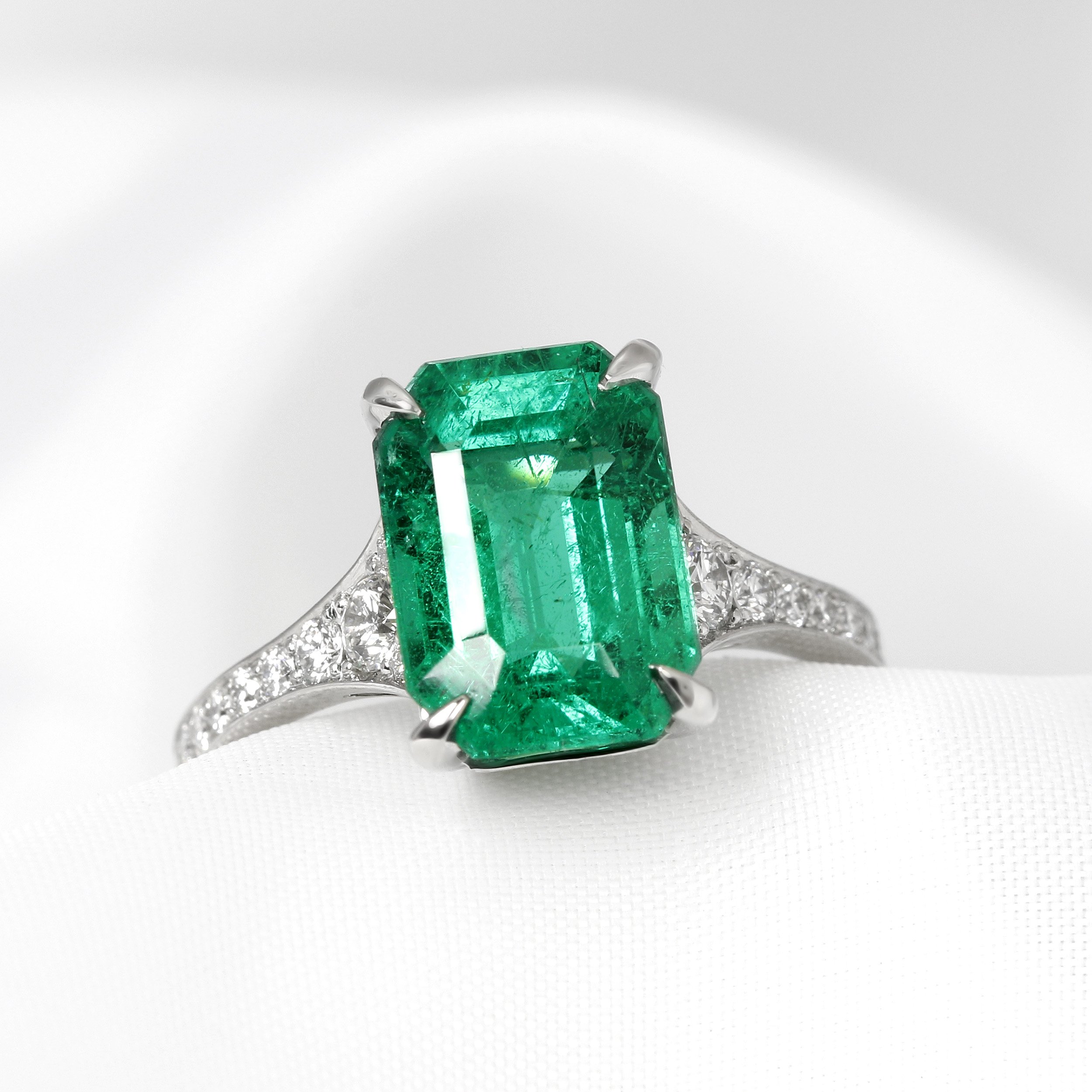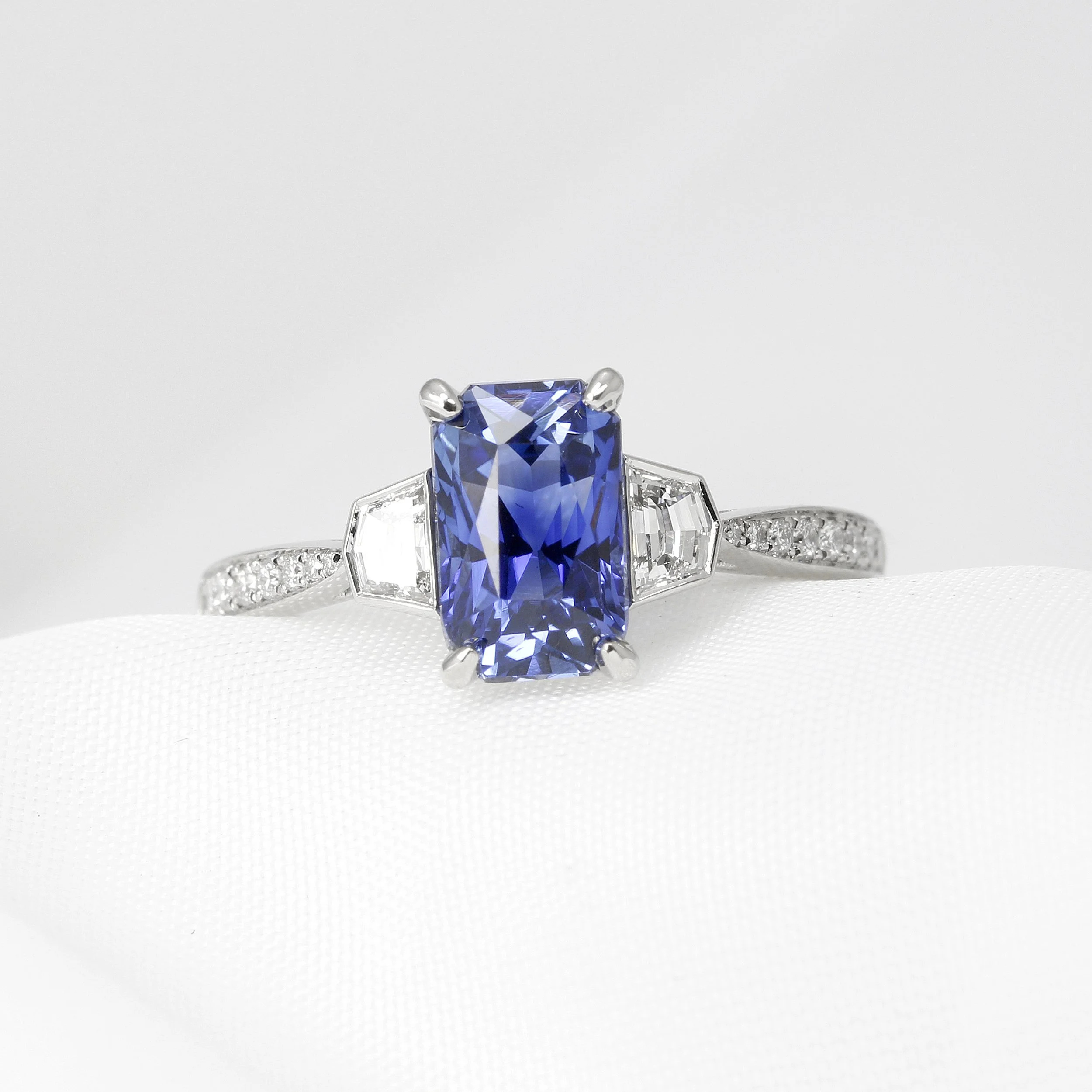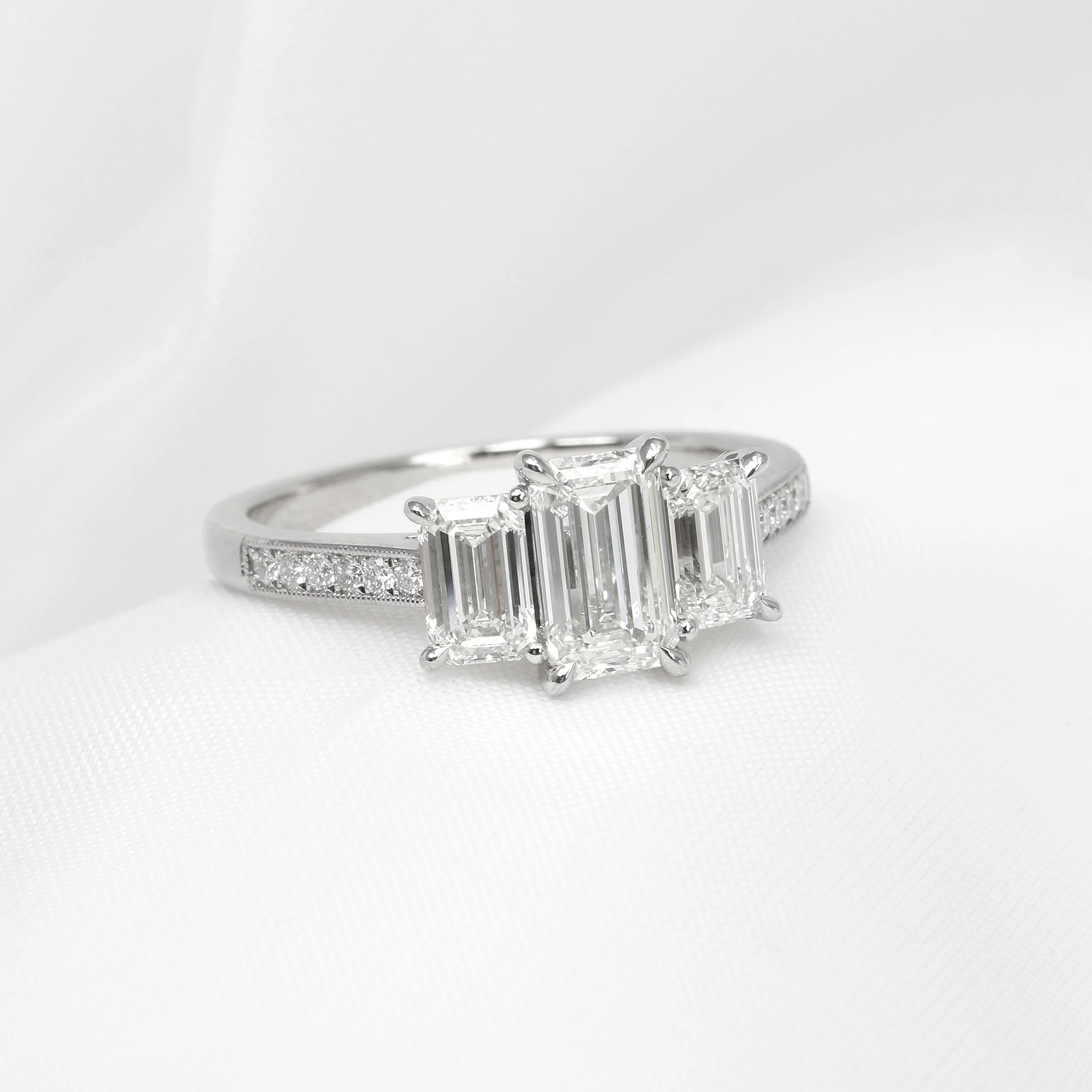Gemstones and Certificates: What You Need to Know
When buying a gemstone—whether it’s a sparkling diamond or a vivid sapphire—one of the most common questions is:
Should it come with a certificate?
or
Why doesn’t it have a certificate?
The answer isn’t always straightforward. Certificates (or more correctly, reports) play an important role in the jewellery world, but not every gemstone comes with one—and that’s not always a bad thing.
This article will explain what gemstone certificates really are, why they matter, and why coloured stones are often sold without them.
Certificates vs. Reports: What’s in a Name?
Strictly speaking, gemmological laboratories don’t issue “certificates.” They issue reports or dossiers.
A certificate implies a guarantee of value or authenticity, which laboratories don’t provide.
A report/dossier is a neutral, objective record of a gem’s characteristics.
That said, in the jewellery trade the term certificate has been used for a very long time, and most people use it for simplicity. Just for this reason, this article will also use the words ‘certificate’ and ‘certified’ but just remember: officially, the correct term is gemstone report or diamond dossier.
What Are Gemstone Certificates?
A gemstone certificate (report or dossier) is a document produced by an independent gemmological laboratory. It records the gemstone’s essential details, such as:
Identity: What the stone actually is (diamond, sapphire, emerald, ruby, etc.).
Carat weight: The exact weight of the gem.
Measurements: Its size and proportions.
Cut and shape: The style of cutting and the quality of symmetry and polishing of facets.
Colour and clarity: The overall hue and transparency, including inclusions.
Treatments: Whether the gem has undergone enhancements (e.g. heating in sapphires, oiling in emeralds).
A certificate does not provide a financial value or appraisal. Its role is to describe the gemstone as objectively and scientifically as possible but of course, even a report is still a subjective opinion even when trying to be neutral. Gemstones must also be loose to be graded or tested. Sometimes in vintage jewellery it is not possible to unset stones without damaging the item so estimates of weights are given and analysis is done in the mounts..
Why Are Some Stones Certified?
Certification isn’t free. A full report from a trusted laboratory usually starts at £250 and can take a week to several weeks to complete.
For this reason, certificates are most common for:
Diamonds (especially over 0.25ct)
Large or rare coloured gemstones
Historically, the jewellery industry relied on trust and simple hand written receipts and brief descriptions. But as online buying grew and fraud became more common, insurance companies and customers began to demand independent reports to protect themselves. Also, as we look towards becoming more ethically and environmentally aware society is changing and the demand for documentation is increasing.
Diamonds
The GIA (Gemmological Institute of America) came into existence in 1931 and they created a standardised grading system in 1955. Up until that time jewellers had been classifying diamonds into tiered grades of A, B and C or roman numerals I, II, III or AAA, AA, A. Often if they wanted to sell lower quality diamonds for a higher price they would push it up a grade and alter the descriptions.
With so many ways of tiering diamonds and no fixed chart of what each diamond in each category should look like it only caused confusion and was complicated. It made quality control and diamond trading on the international markets also very difficult. Therefore, the GIA started from scratch and created a new standardised model which is why the diamond grading begins at D. They wanted to break away from the old system. They also grade diamonds against a master set of diamonds and this master set is never changed so there is always a constant reference with a uniform description and strict nomenclature rules.
Before 1955, diamonds were classified with inconsistent systems (A, B, C… or I, II, III… or AAA, AA, A).
The GIA (Gemological Institute of America) solved this by introducing the 4Cs (Cut, Colour, Clarity, Carat). Grading now begins at “D” to mark a clean break from old methods. Read our article on the 4Cs to know more about this system.
GIA also established a master set of diamonds with accurate descriptions and precise wording for consistency, ensuring grading standards remain fixed.
Large corporations like DeBeers invest heavily in grading diamonds because diamond mining is highly commercialised and on a very large scale.
In short: Diamonds are graded to create consistency and trust in a global market.
Coloured Gemstones
Coloured gems are a completely different story and are graded differently. They are not graded on the 4Cs like diamonds and are made of a compound of different elements which in turn affect their shades and clarities and this makes it more complex. No two coloured gemstones are alike. Sapphires from Australia tend to be darker than those from Sri Lanka. There is no way to standardise colours and inclusions in coloured gemstones due to the fact different countries will have different quantities of trace elements and different types of inclusions depending on the geological location and conditions they form in.
They aren’t graded by the 4Cs like diamond are.
Each stone is chemically unique—trace elements affect colour and clarity. For example, Australian sapphires tend to be darker than Sri Lankan ones as there is more iron present. Some companies claim to use the triple A system for coloured gemstones, AAAA (exceptional), AAA (top tier), AA, A but this is not an official grading system and very subjective to the seller. It is more a trade designation and used with Tanzanites but other sellers may apply this to other gemstones like aquamarine etc.
Our eyes and brains also interpret colour differently making grouping and labelling colours very difficult and this is one of the most common debates amongst gemmological laboratories.
Mining is small-scale, often artisanal, and poorly documented. Stones are sold quickly to cutters in small handfuls at a time, and quality cannot be properly assessed until the cutting and polishing stage later on.
Tracking origin is nearly impossible for most coloured gems, since they’re mined in small quantities by many individuals and will pass through many hands before they reach their final destination.
Only the finest, rarest examples—such as Kashmir or Ceylon sapphires, Burmese rubies, Colombian emeralds, Paraiba tourmalines, and similar treasures—are typically sent for certification to add to their market value. The location’s reputation and history for producing the best quality colours and specimens usually command higher market prices which is another reason large stones from these places are usually certified.
GIA can provide colour and clarity grading for coloured gems but this is standardised across all gems ie; they have three clarity designations Type 1 - 3.
Type 1 Gems: These gemstones are often found to be virtually inclusion-free. Gem-quality specimens are normally 'eye clean' and stones with visible inclusions are rarely used for jewellery.
Type 2 Gems: These gemstones are usually included. Some 'eye clean' gemstones can be found, but are not nearly as common in occurrence as type 1 gem types. Stones with minor inclusions that are visible to the unaided eye are often used for jewellery. These include sapphire and ruby.
Type 3 Gems: These gemstones are almost always included. Even gemstones with noticeable inclusions are often used for jewellery, particularly emerald and watermelon tourmaline.
Colour is graded by assessment of tone, saturation and hue.
At the end of the day, whether grading is carried out on diamonds or coloured gems - with the best standards and controlled environments, by the most reputable laboratories, a grade is still a subjective opinion even when trying to be as objective and neutral as possible - based on a widely recognised and accepted set of criteria.
More common stones (like amethyst, citrine, or smoky quartz, tourmalines, garnets etc.) are abundant and inexpensive. Certifying them would cost several times their retail value, so it doesn’t happen.
Diamonds vs. Coloured Gemstones
Diamonds
Standardisation: Diamonds are graded on universally recognised scales (like the “4 Cs” – cut, colour, clarity, and carat).
Market demand: Customers buying diamonds often expect certification from well-known laboratories such as GIA, IGI, or HRD.
High value: Diamonds are usually high-value purchases, so independent verification adds security and trust.
Coloured gemstones
Premium quality: The stone is large, rare, or valuable.
Provenance & Location: The buyer or seller wants confirmation of origin* (e.g., “Kashmir sapphire” or “Colombian emerald”).
Types of Treatments: Some treatments on larger stones need to be disclosed and verified as this affects their value.
Can Origin Be Proven?
Diamonds: Origin usually cannot be determined. Diamonds are made of one element—carbon—which can be found everywhere and anywhere in diamond rich territories. It has not been possible yet at gemmological laboratories to establish location of formation as there is not enough information within the diamond itself to give geological hints to geographical locations. Diamonds are mined, sorted, and packed together under the strict Kimberley Process regulations before being sent to cutting manufacturers in countries like India, making tracking impossible. One exception is CanadaMark Diamonds, who document their stones from the Ekati mine—but expect to pay a premium. If you would like to read more about CanadaMark Diamonds we wrote a blog article on this which you can read here.
Coloured Gems: Origin can sometimes be estimated, since their chemical “fingerprints” vary by region. But it’s still not an exact science—different laboratories may give different opinions on the same stone. Coloured gemstones have many more elements that make up their composition and in varying quantities. These quantities and concentration levels can indicate geological locations where they might have formed. However, there poses challenges because ecologically and politically the world is always changing. Boarders and countries have changed and scientists are still gathering data to create a base reference guideline so even the origin can sometimes be only an approximate. There was an example of a sapphire that had been assessed by three independent laboratories and each one came back with a different origin. They can only compare it to samples already collected in their databases and make educated hypotheses based on known geological information available to them.
The bottom line: science research is still trying to find ways to establish origin especially when the materials in gems are commonly found in very many countries. Origin reports are educated hypotheses, not guarantees.
Certificate of Origin from CanadaMark Diamonds (photo courtesy of Burgundy Mines)
Why Aren’t Most Coloured Stones Certified?
Unlike diamonds, coloured gems are:
Too diverse – No universal grading scale exists. Coloured gemstones are far more varied and complex being compounds of multiple elements. Each stone has a wide spectrum of colour and inclusions, and there is no single universal grading system.
Cost vs. value: Certification can cost a few hundred pounds, which may not make sense for a modestly or lower priced coloured gemstone.
Market practices: Many coloured stones are traded in local markets or directly between jewellers and dealers without certification but they must adhere to the System of Warranties and general ethical guidelines.
Subjectivity: Colour is a matter of perception. Your eyes will see colour slightly differently to the next person. There is no universal piece of equipment likewise, that can tell shades of colour. Laboratories have this issue and may describe saturation and hue differently and this is still a very heavily disputed subject in the science world—how to settle on a colour label for each gemstone.
Disclosure of treatments is complicated: Some people in the gem and jewellery trade feel the issue of treatments is very important, although legal and ethical issues surrounding them are not straightforward. Consumers feel they have a right to know what they are purchasing but those in the trade consider some treatments to be ‘traditional’ and so disclosure is unnecessary. Some gem materials undergo treatments so commonly that it should just be assumed the stones have been treated unless there is evidence to the contrary. Not all treatments are alike—some are permanent whilst others temporary.
The Purpose of Certification
At its core, a report/dossier helps to build trust. It helps answer key questions:
Is this gem natural or synthetic?
Has it been treated?
Is it really what the seller claims?
For high-value purchases, certification protects your investment. For everyday or modest stones, it may not be necessary—so long as you buy from a reputable jeweller.
Beware of Fake Certificates
One of the most important things for buyers to know is that not every “certificate” is genuine. Unfortunately, some sellers create their own documents – complete with logos, plastic lamination, and even fake holograms – to make them look official. We see this often online and especially on websites like Etsy, Vinted, TikTok and Instagram shops.
Here’s what to remember:
Only independent gemmological laboratories issue reports & dossiers: And they should be staffed by experienced and qualified gemmologists who hold FGA (Fellow of the Gemmological Association) or GG (GIA Graduate Gemologist) titles. If your report uses the word “certificate” that in itself is a red flag. Remember the nomenclature—laboratories issue reports and dossiers not certificates. If the report has the word “certificate” on it -approach with caution!
Look for anti-counterfeiting features: Like passports and driver’s licences, laboratory reports are now issued with holograms, serial numbers and seals amongst other things to show authenticity. You should be able to enter the certificate number on the website of the laboratory who issued it and be able to see if it is legitimate. If the number is not recognised it is likely a fake.
Check the dates: Official gemstone reports will be dated. If a stone is chipped or damaged or potentially been treated this may have happened after the report was issued. If there is no date on the certificate this could potentially not be legitimate.
Shops or businesses cannot issue official gemstone certificates. If the certificate bears the retailer’s name rather than a recognised laboratory, it is simply a store document, not a true gemstone dossier. A small independent gem dealer may be able to write that the stones come from a particular country if they have close ties to the mine but they were likely sent to another country for cutting (unless they do this themselves in-house) and it all comes down to trust whether the stones are really from that country of origin, if they are the same stones that were sent for cutting and polishing and whether they can prove and track the gemstone’s journey.
Laboratories do not sell gemstones nor can they value them. Their sole purpose is testing and identifying gems neutrally and objectively. This independence is what gives their reports credibility. They will never stipulate a market price on the report/dossier.
If it looks too good to be true it probably is: If the gemstone is under £300 it is not likely to have a certificate because an official gemstone report alone usually starts at £250. Companies would be making a loss if they spent time sending it off for grading and charging well under this amount. Very few coloured gemstones are of exceptional quality and worth sending for a report.
If in doubt, look up the laboratory’s name, read their reviews and do your research. Trusted and respected laboratories include GIA (Gemological Institute of America), SSEF (Swiss Gemmological Institute), and Gübelin and IGI (International Gemmological Institute) among others.
Final Thoughts
If you’re buying:
A diamond over 0.25ct – a certificate is strongly recommended.
A rare coloured gem – a certificate adds value and confidence.
A modest gemstone – certification may not be practical. Instead, focus on buying from a trusted jeweller who uses professional suppliers who work with gemmologists.
Certificates don’t make a gem more beautiful, but they do give peace of mind. Knowing what they cover (and what they don’t) helps you make smart, informed choices when investing in nature’s most dazzling treasures. The key is understanding what certificates do—and don’t do—so you can decide when they matter most in your gemstone journey.
Timothy Roe Fine Jewellery specialises in diamond and coloured gemstones with over 30 years experience and creditable contacts in the jewellery industry. We work with trusted suppliers to source our stones individually and create bespoke fine jewellery made in our Chichester workshop. Come and visit us to see our collections or commission your very own bespoke piece and choose your own unique and special gemstone!
